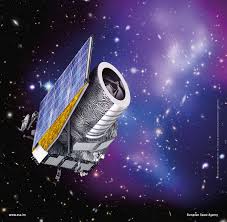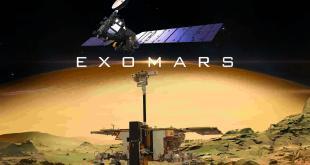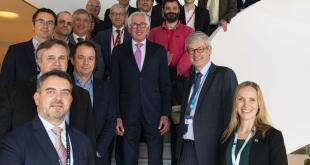
After more than 10 years of design, fabrication and testing, the NISP (Near-Infrared Spectrometer and Photometer) instrument was delivered to ESA on Tuesday 19 May to be installed inside the telescope of the European Euclid astrophysics mission. Carrying the largest infrared camera ever sent into space, NISP is set to deliver key insights as scientists seek to unlock the secrets of dark matter and dark energy. The instrument is the result of an international effort coordinated by France, with partners notably from Italy, Germany, Spain, Denmark, Norway and the United States.
As its name suggests, the NISP instrument has the unique ability to operate in photometric and spectroscopic modes. Conceived specifically for the mission’s science goals, this combination of technologies will make it possible to measure the distances of billions of galaxies very precisely and thus delve deep into the history of the Universe. With these measurements, scientists will be able to compile 3D maps of the Universe over time, yielding crucial elements to understand how these large-scale structures have evolved.
French Mission Partners
The French National Centre for Scientific Research CNRS and other partners are involved in the mission through three of their research laboratories:
o The LAM astrophysics laboratory in Marseille (1) (LAM) is the instrument principal investigator and prime contractor. It supplied the silicon carbide structure and grisms, complex optical components that have a diffraction grating on one face to produce a spectrum of incident light. Space environment, qualification and performance check tests were performed in the large cryotank at LAM developed with support from CNES.
o The CPPM particle physics laboratory in Marseille (2) , the IP2I institute of physics of the two infinities in Lyon (3) and the LPSC subatomic physics and cosmology laboratory (4) are tasked with characterizing and verifying the performance of the infrared detectors, as well as analysis of scientific performance. CPPM is also responsible for the focal plane, one of the largest infrared cameras to be sent into space.
• CEA (5), the French atomic energy and alternative energies commission, supplied the cryogenic mechanisms for the photometer’s filter wheels and the spectrometer’s grisms.
• CNES (6) provided part of the funding for the French contribution to NISP. It is providing key resources to LAM in addition to its technical expertise for certain NISP activities. CNES is also responsible to The European Space Agency ESA and other partner space agencies on the mission for supplying the French contributions, of which the NISP instrument is one.
Selected in 2011 for ESA’s Cosmic Vision programme, the Euclid mission will be launched in 2022 from the Guiana Space Centre and placed into orbit around the L2 second Lagrange point 1.5 million kilometres from Earth, where the gravitational forces of the Sun and Earth balance each other to create a ‘sweet spot’ where a satellite can remain permanently aligned with the two bodies. This orbit is favoured by science missions because of the highly stable observing conditions it affords.
Euclid has two science instruments placed behind a 1.20-metre-diameter telescope: a visible imager (VIS) and NISP. For six years, the satellite will survey billions of galaxies to help scientists hunt for the signature of dark matter and dark energy.
ESA is coordinating the mission’s development, notably construction of the satellite and its telescope by Thales Alenia Space Italy and Airbus Defence & Space Toulouse respectively. ESA member states, through their national space agencies, are tasked with building the VIS and NISP instruments, as well as setting up the data centres that will analyse the mission’s data.
(1) LAM (CNRS/AMU/Cnes)
(2) CPPM (CNRS/AMU)
(3) IP2I (CNRS/Université Claude Bernard Lyon 1)
(4) LPSC (CNRS/UGA)
(5) Centre National d’Etudes Spatiales





